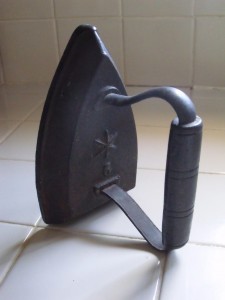
This sadiron belonged to Gen Q editor Melissa Thompson Maher's mother, who used it as a young girl growing up on a farm.
Quilters can be divided into two groups (okay, quilters can be divided into a million groups with thousands of subgroups, but just work with me here): those who love to iron and those who despise it with an all-consuming, passionate hatred of the kind usually reserved for war criminals and people who are mean to kittens. Those of us who fall into the latter category (and yes, I mean me) should stop and consider how lucky we are. These days, almost all the ironing I do is quilting-related, and my iron is a lightweight, sleek-and-shiny model I picked up at Target for less than twenty bucks. (And I have a lovely “smart textile” ironing board cover to keep me company!) I’m sure if my great-great-grandmother could hear me complain about how I hate to iron, she’d have all kinds of choice words for me about what ironing was like in her day. And then she’d probably flex her biceps at me—those old irons were seriously heavy!
And regardless of whether you love—or hate—ironing, quilters and stitchers do spend a lot of time with burnin’ hunks of metal in their hands. So it’s easy to understand why some feel driven to collect vintage and antique examples of these instruments of torture, er, highly effective tools.
Probably ever since people began to weave cloth they have also been trying to get the wrinkles out of it. There’s evidence of people using wood, glass and stone to smooth or pleat fabric and the Chinese were the first to use hot metal (more than a thousand years ago) by rubbing a pan filled with hot coals over material that had been stretched taut. Later, devices such as mangles and screw presses (which pressed fabric between rollers or between two flat plates) were available to those wealthy enough to afford them and the servants to use them, and these were usually best for larger items such as sheets or table linens. Clothing and other small items required hand-held tools, and in the Middle Ages, people started forging metal flat irons called sad irons or sadirons (not because the work made you cry, but because “sad” came from an old English word for “solid”).
Most sadirons you find in antique shops and on eBay are from the 1800s or later, though they were used earlier than that. Sadirons had to be heated carefully – too hot and you could easily scorch the fabric; not enough, and well, why bother? Two irons had to be employed at the same time – one to heat while the other was being used – and they had to be kept scrupulously clean.
Eventually, someone figured out that you could hollow out the iron, and put hot material inside it. Charcoal irons have hinged lids and holes to allow in oxygen and keep the coals inside still smoldering. Some may have a tube that draws smoke away from the fabric and these are sometimes called chimney irons. And irons that use a heated brick or other solid material inside are called box irons or slug irons.
Another early type of iron is the gas or fuel iron, which used gasoline, kerosene, alcohol or other combustible over a gas-jet. These irons will have a tell-tale reservoir, usually at the back, to hold the fuel. These were made as late as the 1960s and are still in use among the Amish and others who live without electricity.
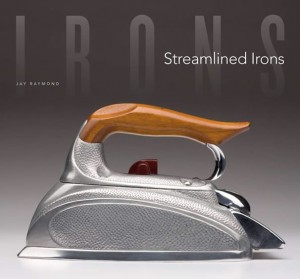
Streamlined Irons, by Jay Raymond, is a beautiful book that shows the variety and beauty in electric irons.
Antique sad irons range in price, with condition, age and rarity being the main factors. Plain irons with no special features or designs (and sometimes known as doorstop irons) will be the cheapest, often going for as little as a dollar from some dealers who find themselves glutted with them. Fluting irons, which pressed fabric into a kind of pleated shape, can go for as much as $3,000. Fuel irons generally range between $30 and $100, and charcoal irons can range from $75 to $500, with particularly rare models fetching well over $1,000.
And this doesn’t even begin to cover the range of irons that came about after the advent of electricity. Steam iron collector Jay Raymond has a gorgeous book, Streamlined Irons, and a blog all about electric irons, and the design in some of the models he’s found is truly breathtaking. And serious collectors of all types of irons can find information and resources at The Pressing Iron and Trivet Collectors of America .
Sandy Navas has been collecting irons for 30 to 35 years, though she admits her first iron was purchased “because I needed an unobtrusive doorstop.” A couple of her treasures came from the Middle East, where she lived for a time, but most of her others were handed down from her mother or picked up at garage sales. Sandy says she’s “pretty much of a tightwad” and hasn’t paid more than $10 for most pieces.
Quilter and teacher Ann Turley also collects irons—but only of the electric persuasion—and she purchased her first one to use, not as a collectible. “Since the old irons don’t have steam vents and don’t shut off after 30 seconds in the horizontal position, I like to use them with fusible,” she says.
If you’re going to actually use one of your iron finds, Ann suggests being careful because older irons get much hotter than modern ones and have much shorter cords. She has paid as little as $3 for an iron, and only as much as $15 for some of the samples in her collection. (Unfortunately, Ann was in the process of moving and couldn’t photograph any of her collection for us.)
So the next time you’re cursing your Rowenta for becoming incontinent, just think about great-great-grandma lugging a hunk of cast iron out of the fire and trying not to burn herself or her linens. Just don’t tell her you have 20 of them and just snagged a great deal for another one on eBay. She might hurl that baby at your head.
– Megan Dougherty
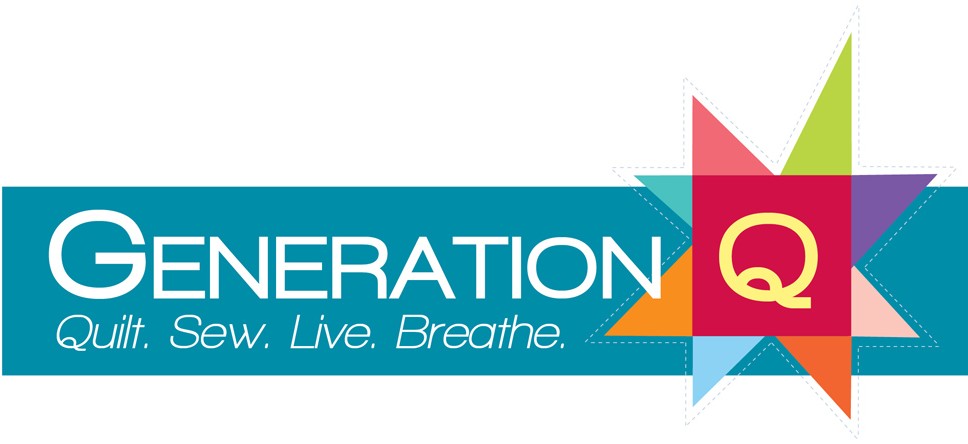
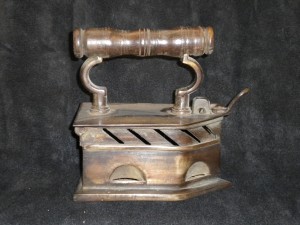
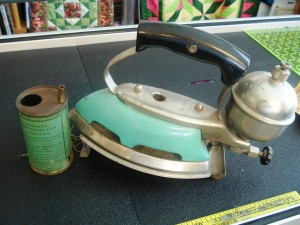






COMMENT #1
Who knew an article about irons could be funny? Trust you, Megan. 🙂
Also informative though – I didn’t know about combustible irons (uhmmm…. does that seem like a REALLY bad idea to anyone else?); and though I did know about the irons in the fire thing, I also didn’t know about the ones that you put coal *inside* either.
I have an old electric iron (40’s or 50’s maybe?) that weighs (roughly) a thousand pounds that I love for fusing because, like Ann, they don’t have a steam vent. (Er… Ann probably *does* have a steam vent – I meant, like Ann, I like the steamless ones for fusing. ) Also, clearly, I am very fond of parenthetical references. (Some days more than others.)
Okay – that’s enough from me!
Next?
COMMENT #2
There is no steam iron in my quilting room, vintage dry irons are all that are allowed. I have two; one is a Sunbeam Ironmaster (probably from the 1950s) and the other is a McGraw Electric Co. “Fostoria” model that has two front ends and must be rested on its side or else set on a trivet. The heavy old Sunbeam is a great companion when using Mary Ellen’s Best Press or Magic Sizing to “erase” the wrinkles out of yardage off the bolt (especially that dratted center fold). The double-pointed Fostoria model is smallish and is terrific for the pressing that must be done with paper foundation work because it has two front ends that both mean business; it is a very hot iron that “fries spit” very quickly once you turn it on.
I’m sure there are more of us vintage iron lovers ready to post ….
COMMENT #3
Ive got an old dry iron from the 30’s thats great for quilting. But for the normal stuff I love the steam! One of the ways I dont envy my grandma, vacumming too! Modern day has a few things going for it!
COMMENT #4
While cleaning out my Grandparents’ household, I came across an unusual electric iron new in the box. It’s a Eureka cordless electric iron made by the Eureka Williams Corp. of Bloomington Illinois. It has the directions in the box and is in excellent shape. Is it a collectible item or not? Thank you for your time. Jim Butery
COMMENT #5
I have a travel sizes steam iron made by GE. My Mom used it in the 1960’s, before blue jeans took over. In th ’50, Mom had her little girls dressed perfectly on vacation, and elsewhere. It has it’s original directions, a cotton cloth bag, with zipper to close plus a long electric cord. If you collect irons, this may not be old enough for you. On the other hand, it might help with your quilting, being small as it is.
If you aren’t interested, maybe you know someone who would be…..
No charge. Just a good home for the little iron.
Home phone: 513 932 3688.